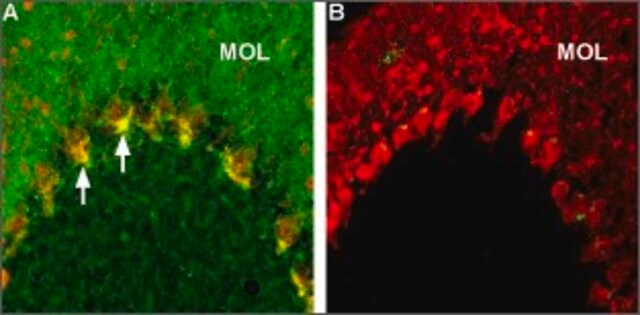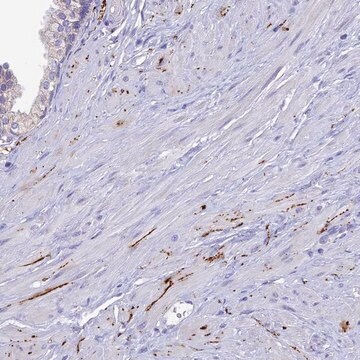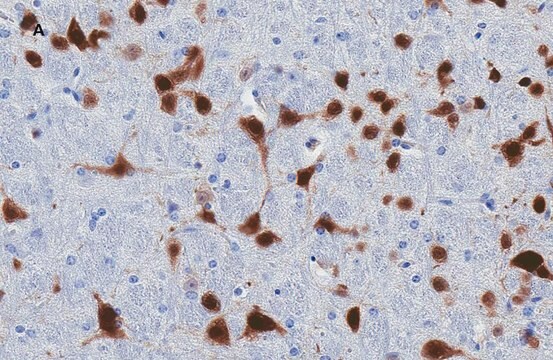D0564
Diphtheria Toxin
from Corynebacterium diphtheriae, ≥98% (SDS-PAGE), lyophilized powder, protein synthesis inhibitor
Synonym(s):
DTx
Sign Into View Organizational & Contract Pricing
All Photos(1)
About This Item
Recommended Products
Product Name
Diphtheria Toxin from Corynebacterium diphtheriae, lyophilized powder, Product is in unnicked form
Quality Level
form
lyophilized powder
storage temp.
2-8°C
Looking for similar products? Visit Product Comparison Guide
General description
Diphtheria toxin may be used as a toxin element in the construction of immunotoxin for cell-specific cytotoxicity. The translocation domain of bacterial toxins with a natural endosome escape mechanism has been used in the development of efficient nonviral vectors for applications in gene therapy.
Application
Diphtheria Toxin from Corynebacterium diphtheriae has been used:
- for microglia depletion to study post-traumatic stress disorder in mice
- intraperitoneally injected in transgenic mice to select the hybrids after fusion of transplanted hematopoietic stem and progenitor cells (HSPCs) during ablation
- to study its effect on eosinophil lineage-committed progenitors in an eosinophil-deficient strain of mice (iPHIL)
Biochem/physiol Actions
Diphtheria toxin is a bacterial toxin produced from Corynebacterium diphtheriae. It contains three domains that have intracellular actions. The domains are involved in the intoxication of the cell, cell-surface binding and internalization into endosomes, translocating into the cytosol across the endosome membrane and inhibiting cellular protein synthesis. Diphtheria toxin is useful in constructing biotechnological tools and therapeutics. It inhibits protein synthesis by catalyzing adenosine diphosphate (ADP)-ribosylation of the target protein in eukaryotes.
Physical form
Lyophilized powder containing Tris and EDTA.
Reconstitution
Each vial, when reconstituted to 0.5 mL with sterile distilled water, contains ~1 mg of diphtheria toxin in 0.01 M Tris and 0.001 M Na2EDTA, pH 7.5.
Signal Word
Danger
Hazard Statements
Precautionary Statements
Hazard Classifications
Acute Tox. 1 Inhalation - Acute Tox. 1 Oral
Storage Class Code
6.1A - Combustible acute toxic Cat. 1 and 2 / very toxic hazardous materials
WGK
WGK 3
Flash Point(F)
Not applicable
Flash Point(C)
Not applicable
Choose from one of the most recent versions:
Already Own This Product?
Find documentation for the products that you have recently purchased in the Document Library.
S M Yellon et al.
Biology of reproduction, 100(5), 1386-1394 (2019-01-11)
To test the hypothesis that macrophages are essential for remodeling the cervix in preparation for birth, pregnant homozygous CD11b-dtr mice were injected with diphtheria toxin (DT) on days 14 and 16 postbreeding. On day 15 postbreeding, macrophages (F4/80+) were depleted
Biology and molecular epidemiology of diphtheria toxin and the tox gene
The Journal of Infectious Diseases, 181 (2000)
Mary F Fontana et al.
PLoS pathogens, 12(12), e1006046-e1006046 (2016-12-07)
Dynamic regulation of leukocyte population size and activation state is crucial for an effective immune response. In malaria, Plasmodium parasites elicit robust host expansion of macrophages and monocytes, but the underlying mechanisms remain unclear. Here we show that myeloid expansion
Benjamin J Vakoc et al.
Nature medicine, 15(10), 1219-1223 (2009-09-15)
Intravital multiphoton microscopy has provided powerful mechanistic insights into health and disease and has become a common instrument in the modern biological laboratory. The requisite high numerical aperture and exogenous contrast agents that enable multiphoton microscopy, however, limit the ability
Vicky A Tobin et al.
Nature, 464(7287), 413-417 (2010-02-26)
Many peptides, when released as chemical messengers within the brain, have powerful influences on complex behaviours. Most strikingly, vasopressin and oxytocin, once thought of as circulating hormones whose actions were confined to peripheral organs, are now known to be released
Our team of scientists has experience in all areas of research including Life Science, Material Science, Chemical Synthesis, Chromatography, Analytical and many others.
Contact Technical Service









